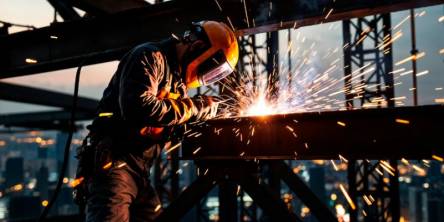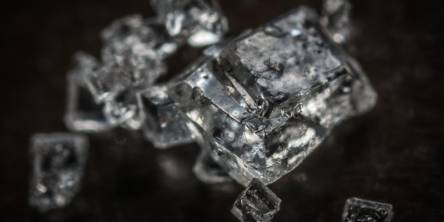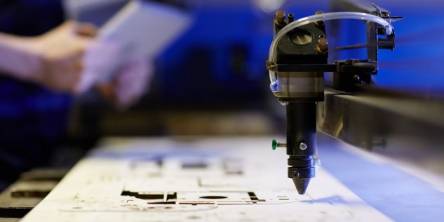Introduction to Advanced Ceramics
Advanced ceramics forms the foundation of machining and metal fabrication industry. These are also known as technical ceramics, industrial or engineering ceramics.
These have highly versatile and unique mechanical, thermal, electrical, and biochemical propertiesand used for a huge number of applications. Ceramics have a unique combination of properties, and by combining these, they are utilized for fabricating advanced components. Components made from advanced ceramic materials are becoming increasingly popular. Most of the conventional materials available cannot be overcome the unique properties offered by ceramics.
- High strength
- Hardness
- Low density
- High modulus of elasticity i.e. Stiffness
- Excellent Wear resistance
- Low Electrical conductivity
- Low thermal conductivity
- Excellent Refractory Material
- Good thermal stability
- Good corrosion resistance
These extraordinary properties of advanced ceramics have opened up a whole new world of development opportunities in a wide range of industries. There is a wide range of advanced ceramics such as Alumina, Silicon Carbide, Zirconia, and many, more. Each of these has their own particular performance characteristics and benefits. New materials are being developed in this field with new and more advanced applications. The techniques of manufacturing ceramics (shape forming, sintering) allow to produce ceramics with different sizes and shapes & cost efficiency.
Methods Used in Fabricating Ceramics:
- Machining of ceramics in the Pre-sintered state
Sintered ceramics are the hardest ceramic material. Advanced Ceramic is fabricated before the final sintering stage into the pre-sintered “bisque” state. Conventional machining methods such as milling, drilling, turning may be applied for the ceramic parts in the pre-sintered state. Shrinkage and warping of the ceramic
Example of Machining of ceramics in the Pre-sintered state:
- Titanium nitride
- Tungsten carbide
- Polycrystalline diamond (PCD)
2. Grinding of Ceramics
Grinding of ceramics is the most useful technique of machining in the sintered state. It involves material removal from the surface of workpiece with the help of a rotating abrasive wheel. The grinding zone is continuously flushed with a fluid coolant. This is helpful for cooling the grinding zone and in the lubrication of the contact between the wheels. This technique is very helpful to remove the micro-chips & debris produced while grinding the advanced ceramics such as tungsten and tantalum.
3. Laser machining of ceramics
Laser machining is performed with the help of strong, high power laser. This aids in melting the material by a supersonic gas jet.
The Following Machining Operation May Be Performed By Laser:
- Drilling
- Marking
- Cutting
- Scribing
The drawback of this method is that residual stresses and micro-cracks are formed at the edge as a result of the shrinkage of material. The very high laser energy density is required in this method for melting and Machining alumina. These micro cracks can be minimized by preheating of the ceramic workpiece to 1399ºC, prior to the laser machining. This is also helpful in reducing thermal stresses.
4. Ultrasonic Machining Technique:
Ultrasonic machining method uses the action of slurry containing abrasive particles. These particles flow between the workpiece and vibrating tools at an ultrasonic frequency. The tool is pressed to the workpiece at a constant load. The abrasive particles strike the ceramic workpiece and remove small ceramic debris fracturing from the surface.
Ultrasonic machining is used commonly for drilling operations. The main drawback of this method is low accuracy and high tool wear.
Uses of Advanced Ceramics
The Advanced ceramics are known for their remarkable properties and uses. They play a critical role in industries like manufacturing, defense, space exploration, electronics and telecommunications,.
- Sialons:
Sialons are made up of elements such as silicon (Si), aluminium (Al), oxygen (O) and nitrogen (N). These are a new addition to family of ceramic. They have excellent thermal shock resistance
2. Alumina
The is highly versatile ceramic and serves important uses in electronic industry. It displays a wide range of electrical properties from insulators to resistors to semiconductors. Machining of Alumina is done to form various grades of advanced ceramic structures. Ceramic Alumina is a good heat conductor. This allows the electronic systems to function efficiently.
3. Boron carbide:
This material has very high degree of hardness. These are used to design of body armours. Boron carbide (B4C) is extremely hard ceramic material used for forming bullet strikes the ceramic plate.
Similar Articles
When you see a steel ship in the harbor, the first impression is usually sheer scale.
Explore CNC turning—its components, process, benefits, applications, and future trends shaping modern precision manufacturing in various industries.
In the competitive industry of car manufacturing, attaining exceptional performance along with an innovative design needs the incorporation of modern manufacturing technologies
Facing delays, quality issues, or supply chain problems in hardware manufacturing? Learn the top 7 challenges—and practical fixes—to streamline production.
In the rapidly advancing landscape of high-tech manufacturing, electronics, and materials science, diamonds are no longer just gemstones they’re high-performance materials redefining what’s possible in technology.
A business in the manufacturing industry today has to ensure that it chooses the precision-engineered components suppliers keenly since the competition is very stiff
Selective Laser Sintering, or SLS, has established itself as one of the most reliable and widely used 3D printing technologies. This method is valued for its ability to produce complex, durable, and high-quality parts without the constraints of traditional manufacturing.
In the retail and display industry, the visual appeal of products is paramount. Customers are constantly drawn to displays that are not only eye-catching but also provide an immersive experience.
As previously established, CO2 laser technology operates by shining a high-power infrared beam on a mixture of gas that contains carbon dioxide, nitrogen, and helium. This technology is well known for the fact that it is able to engrave onto a variety of materials such as wood, glass, plastic, leather, and even some metals with high precision and without contact.









